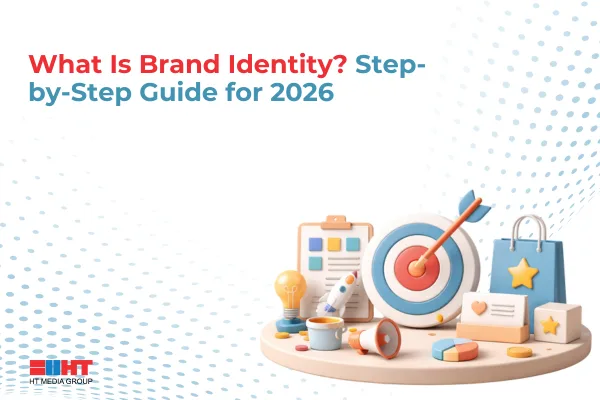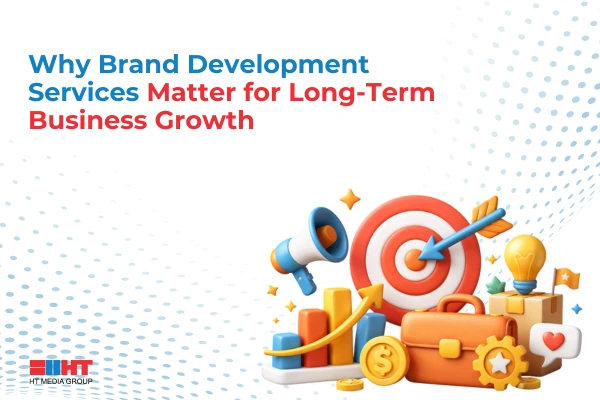Brand management meaning extends far beyond having an attractive logo or a memorable slogan. It involves crafting a comprehensive brand strategy that aligns with a company’s goals, resonates with customers, and fuels growth. Effective brand management ensures that every interaction a customer has with the brand is consistent and reinforces its values. With the marketing landscape evolving rapidly, staying abreast of future trends in brand management is crucial. Businesses must adapt to emerging trends to maintain relevance and competitive advantage. This proactive approach to brand management helps companies build stronger customer relationships and drive long-term success.
Importance of Brand Management
Brand management is more than just creating an identity; it’s about building trust and loyalty with customers. A strong brand helps businesses stand out and attract loyal customers. Good brand management also helps companies charge higher prices, reduce risks, and maintain success in changing markets. According to a latest study by GaggleAMP, 74% of consumers trust brands that deliver high-quality products and services.
In this blog, we’ll look at the new trends shaping brand management. From using AI and data analytics to focusing on purpose-driven branding, we’ll explore how these trends are changing the way businesses build their brands. We’ll also talk about the importance of storytelling, personalisation, and experiential marketing in winning over customers. By keeping up with these trends, businesses can improve their brand strategies and connect better with customers in the digital age.
Know More About Strategic Brand Management
- 5 Growth Marketing Strategies for 2024
- Top Marketing Strategies & Trends to Watch out for in 2024
- 4 Essential Insights to Supercharge Your Brand Marketing Strategy
- Real Estate Marketing Strategies for Surviving the Second Wave
The Future of Strategic Brand Management: Trends to Watch
Brand Management Basics
In marketing, brand management is the backbone of a business. It goes beyond logos and slogans, focusing on shaping how people perceive and connect with a brand. Effective brand management involves strategic planning to ensure every element of the brand consistently communicates its story. This means aligning visual elements, messaging, and customer experiences with the brand’s core values and identity. By maintaining a clear and cohesive brand image, businesses can build stronger customer relationships and foster brand loyalty. Success in brand management requires ongoing effort to adapt to market changes and consumer feedback, ensuring the brand remains relevant and resonates with its target audience.
Understanding Brand Management
Brand management means taking care of everything that shapes how people perceive a brand. From what the brand says to how it looks and even how customers feel when they use its products or services. It’s about creating a bond between the brand and its customers that keeps them coming back for more.
Building a Strong Brand
Effective brand management hinges on a few crucial elements. A strong brand clearly understands its position in the market relative to competitors. It boasts a distinct identity that encompasses its visual elements, tone, and core values, setting it apart from others. Consistent and impactful communication is key, ensuring the brand engages effectively with its audience at every touchpoint. Additionally, a robust brand delivers tangible value, compelling consumers to pay a premium and remain loyal. By focusing on these aspects, brand management ensures that the brand not only stands out but also thrives in a competitive landscape.
Why Brand Management Matters
Managing a brand well brings lots of benefits. It keeps customers loyal and happy, which means they keep buying and telling others about it. A well-managed brand can charge more for its products or services, making it more profitable. Plus, it stands out in a crowded market and can survive tough times better because it has loyal fans supporting it.
The Strategic Brand Management Process
Building a strong brand is vital for businesses in a competitive landscape, especially considering that 77%* Marketing leaders consider branding critical to growth. Let’s break down the key steps in strategic brand management to make it simpler to understand and implement. (*Source: WebFX Marketing Stats)
Brand Audit and Analysis
First, take a close look at your brand. What are its strengths and weaknesses? What opportunities exist in the market, and what threats do you face? Understanding these factors through a brand audit helps you chart the right course for your brand.
Setting Brand Objectives and Strategies
Once you know where you stand, it’s time to decide where you want to go. Set clear objectives for your brand. Do you want to increase visibility, attract a new audience, or boost sales? Then, outline strategies to achieve these goals, keeping in mind your target audience and competition.
Implementing and Managing the Brand Strategy
With a plan in place, it’s time to put it into action. Develop a consistent brand identity that reflects who you are and what you stand for. This includes your logo, colours, and messaging. Make sure this identity shines through in all your communications and interactions with customers.
Monitoring and Evaluating Brand Performance
Finally, keep an eye on how your brand is performing. Track metrics like brand awareness, customer satisfaction, and market share. Use this data to assess the effectiveness of your strategies and make adjustments as needed to stay on course.
Trends & Advanced Techniques
Virtual Influencers: Changing Brand Game
A new trend is catching everyone’s eye, virtual influencers. These are digital characters created using advanced tech and AI. They’re becoming a big deal for brands because they help reach new people, tell unique stories, and stay ahead in the game.
Successful Virtual Influencer Stories
 Lots of brands have already jumped on this trend and seen amazing results. Look at Lil Miquela, a computer generated image influencer with millions of fans. Big brands like Prada, Calvin Klein, and Samsung have teamed up with Lil Miquela to showcase their stuff. These collaborations blur the lines between real and digital, showing how virtual influencers can boost brand visibility and loyalty.
Lots of brands have already jumped on this trend and seen amazing results. Look at Lil Miquela, a computer generated image influencer with millions of fans. Big brands like Prada, Calvin Klein, and Samsung have teamed up with Lil Miquela to showcase their stuff. These collaborations blur the lines between real and digital, showing how virtual influencers can boost brand visibility and loyalty.
Personalisation and AI: Revolutionising the Strategic Brand Management Process
Personalisation and artificial intelligence (AI) are emerging as indispensable tools. AI-driven algorithms analyse vast amounts of consumer data to tailor brand experiences on an individual level. This level of customization enhances engagement, fosters loyalty, and ultimately drives conversions. From recommending products based on past purchases to crafting targeted marketing messages, AI is revolutionising the way brands connect with consumers.
Sustainability Initiatives: Shaping the Future of Brand Management
The global shift towards sustainability is reshaping consumer preferences and expectations, influencing purchasing decisions across industries. As environmental and social concerns take centre stage, brands are recognizing the need to integrate sustainability into their core values and practices. Sustainable branding goes beyond mere corporate social responsibility; it encompasses a holistic approach to business that considers environmental impact, ethical sourcing, and community welfare. By aligning with sustainable initiatives, brands not only contribute to positive change but also resonate with conscientious consumers.
Strategies for Integrating Sustainability into Brand Management
Successfully incorporating sustainability into brand management requires a strategic approach. Brands must first assess their current practices and identify areas for improvement. This may involve sourcing eco-friendly materials, optimising production processes to minimise waste, or supporting social causes aligned with their brand values. Transparency is key, as consumers increasingly demand visibility into a brand’s sustainability efforts. Communicating these initiatives effectively through marketing campaigns and product messaging fosters trust and loyalty among environmentally conscious consumers. Moreover, brands can leverage partnerships with sustainability-focused organisations to amplify their impact and reach a broader audience. By prioritising sustainability in brand management, companies can not only future-proof their business but also contribute to a more sustainable world.
Data Privacy and Transparency
Data privacy and transparency have emerged as crucial factors influencing brand trust. Consumers today are more cautious about how their data is being used by brands, leading to a growing concern over privacy breaches and misuse of personal information. To uphold brand integrity, companies must prioritise transparency in their communications, providing clear and honest disclosures about data collection, usage, and protection. Implementing best practices for maintaining transparency builds credibility and fosters trust among consumers, ultimately strengthening brand loyalty and reputation.
FAQs: The Future of Strategic Brand Management: Trends to Watch
1. What is brand management?
Brand management is the strategic process of creating, maintaining, and improving a brand’s reputation, identity, and value in the marketplace. It involves managing all aspects of a brand, including its visual elements, messaging, customer experience, and overall perception. Effective brand management ensures that a brand remains consistent and appealing to its target audience, helping to build customer loyalty and trust over time. It also involves monitoring and adapting the brand to market trends, competition, and consumer behavior to maintain relevance. By carefully managing a brand’s image and positioning, companies can differentiate themselves from competitors and enhance their overall market value. In today’s competitive landscape, strong brand management is crucial for long-term business success, as it directly impacts customer engagement, sales, and profitability.
2. What are the key components of building a strong brand?
Key components of building a strong brand include clear positioning, a unique identity, and effective communication with the audience. These elements create perceived value, fostering customer loyalty and justifying higher prices. Emerging trends in brand management focus on authenticity, sustainability, and personalization. Brands are increasingly leveraging data-driven insights to tailor experiences, embracing eco-friendly practices to resonate with conscious consumers, and using technology like AI to offer personalised interactions. These trends help brands stay relevant and deepen connections with their target audiences in a rapidly evolving marketplace.
3. What are some emerging trends in brand management?
Emerging trends in brand management include the use of virtual influencers to engage audiences in innovative ways. AI-driven personalization is enhancing customer experiences by tailoring interactions and recommendations. Sustainability initiatives are becoming crucial as brands strive to meet eco-conscious consumer demands. Additionally, prioritizing data privacy and transparency is vital for building trust and ensuring compliance with regulations. These trends reflect a shift towards more tech-savvy, ethical, and customer-focused brand strategies.
4. How do virtual influencers impact brand management?
Virtual influencers, powered by advanced technology and AI, significantly impact brand management by offering innovative ways to engage with audiences. They help brands reach new demographics, especially tech-savvy and younger consumers, through creative storytelling and unique collaborations. These influencers maintain consistent brand messaging and can be customised to align perfectly with brand values, enhancing brand visibility and loyalty. Additionally, virtual influencers minimise risks associated with human influencers, such as controversies or unpredictable behaviour, making them a strategic asset in modern brand management. Their ability to operate 24/7 ensures continuous brand presence and engagement across digital platforms.
5. What is luxury brand management?
Luxury brand management involves overseeing and enhancing the perception, value, and exclusivity of high-end brands. This specialised form of brand management focuses on creating a prestigious image, maintaining quality, and ensuring that the brand remains desirable to affluent consumers. It includes strategies for product development, pricing, marketing, and customer engagement that align with the luxury market’s unique expectations.
Key aspects of luxury brand management include preserving the brand’s heritage, innovating while staying true to the brand’s identity, and delivering exceptional customer experiences. Additionally, managing brand collaborations, exclusive launches, and digital presence is vital to maintaining the allure of a luxury brand. Professionals in this field need to balance tradition with modern trends to sustain the brand’s prestige and market position. Successful luxury brand management ensures that the brand remains aspirational and maintains its elite status across global markets.
Ready to take your brand to the next level? Connect with us today to explore how HT Media can amplify your presence across our diverse portfolio of 25+ brands and properties. Let's turn your brand vision into reality!


















Comment